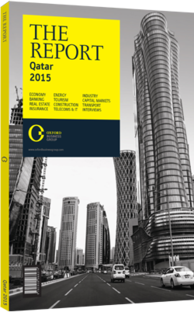Qatar's financial sector improves its capacity to handle risk
Despite having one of the lowest non-performing loan (NPL) rates in the region, the onset of the global economic crisis in 2008 came as a reminder to Qatari lenders of the vulnerability of some areas of their loan books to economic distress. The high levels of personal debt in the GCC were of particular concern to regional regulators and many of them have taken steps to address the issue. Thus, the Qatar Central Bank’s (QCB) decision to establish a credit bureau might be seen as part of a trend toward greater transparency and risk management in the sector.
CREDIT HISTORY: After a two-year review of international best practice, which took a central bank team as far afield as the UK and Malaysia, the Qatar Credit Bureau was established in March 2011. Shortly afterwards, Dun & Bradstreet, the leading business information provider, was selected to provide the technical platform by which the process of receiving and sharing information with banks is carried out. Prior to the bureau’s inception, Qatar’s banks only had access to the central bank for the total amount of outstanding credit held by a customer. Now, thanks to the work of the bureau, they are able to obtain a more granular credit history for personal and corporate customers, enhancing risk management.
The arrival of the credit bureau to the market has also brought advantages to creditworthy customers of financial institutions: the platform allows banks to give customers credit scores and compete for those with high ratings by offering them favourable interest rates and enhanced services. Beyond the credit score, the QCB has begun to roll out other advanced products, including an account follow-up service, with which member institutions can monitor accounts and receive alerts on changes occurring in a customer’s credit portfolio. A portfolio monitoring service was set to be launched that will allow member institutions to assess and track the strengths and competitiveness of portfolios, and assist them in formulating effective marketing strategies. Although in the early stages of its development, the industry response to the credit bureau’s arrival in the sector has been positive.
“The Qatar Credit Bureau reports are an intrinsic part of approving local credit applications at Qatar National Bank (QNB), and access to specific, contemporaneous and reliable information clearly can only contribute positively to risk management at the bank and in the wider financial sector,” George Bell, head of finance at QNB, told OBG. In 2014 the bureau began widening its coverage to include telecoms firms. Negotiations on technical and legal issues began in 2013, and reached the final stages prior to a possible implementation in 2014. The hope is that better quality data will result as more sectors report to the credit bureau, and plans are in place to bring more areas of the economy under its remit – like insurance and utilities.
DATA: Customers and banks are regularly interacting with the bureau. While most individuals apply through banks to view their credit history and credit report, as of 2014 around 600 customers per month were applying directly to the bureau. The bureau’s records show that there has been a marked improvement in the integrity of its data over the short duration of its existence: in the early stages of the credit bureau’s operation about 40% of the customers who applied to it for their credit report disputed their report’s accuracy; by 2014, however, this figure had fallen to 17%. Importantly from the industry’s perspective, the banking sector has not seen a significant slowdown in credit growth as a result of the bureau’s presence. Aggregate credit growth in Qatar has remained in double figures since the bureau’s launch in 2011, with the commissioning of large hydrocarbons and infrastructure projects still the determining factor in relation to sectoral lending activity. While it is still early for the credit bureau and widening its remit means overcoming complex technological and regulatory hurdles, the broadening scope of its activities promises to enhance the ability of Qatar’s financial service providers to make informed, risk-aware decisions.
You have reached the limit of premium articles you can view for free.
Choose from the options below to purchase print or digital editions of our Reports. You can also purchase a website subscription giving you unlimited access to all of our Reports online for 12 months.
If you have already purchased this Report or have a website subscription, please login to continue.

